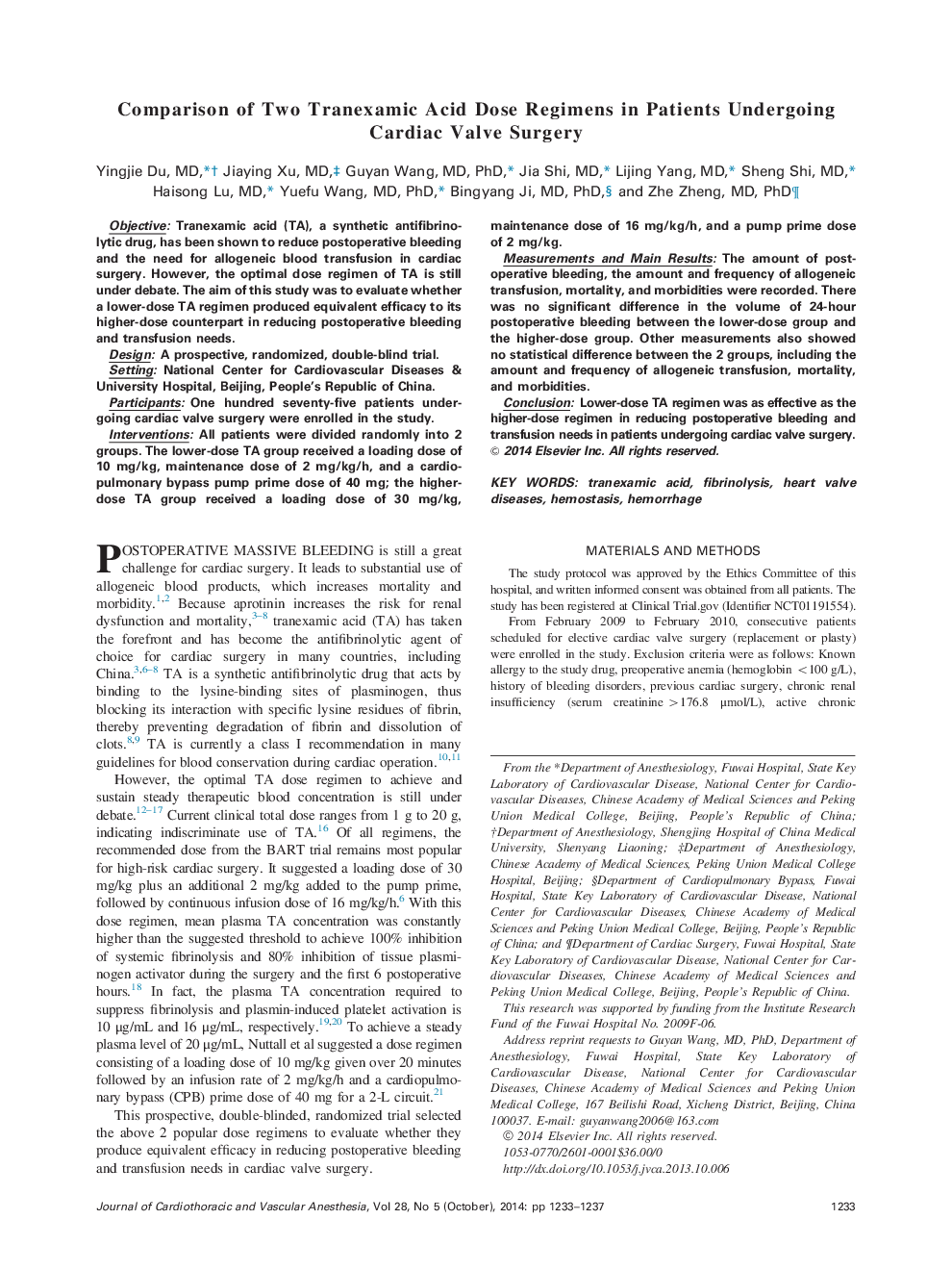| Article ID | Journal | Published Year | Pages | File Type |
|---|---|---|---|---|
| 2759657 | Journal of Cardiothoracic and Vascular Anesthesia | 2014 | 5 Pages |
ObjectiveTranexamic acid (TA), a synthetic antifibrinolytic drug, has been shown to reduce postoperative bleeding and the need for allogeneic blood transfusion in cardiac surgery. However, the optimal dose regimen of TA is still under debate. The aim of this study was to evaluate whether a lower-dose TA regimen produced equivalent efficacy to its higher-dose counterpart in reducing postoperative bleeding and transfusion needs.DesignA prospective, randomized, double-blind trial.SettingNational Center for Cardiovascular Diseases & University Hospital, Beijing, People’s Republic of China.ParticipantsOne hundred seventy-five patients undergoing cardiac valve surgery were enrolled in the study.InterventionsAll patients were divided randomly into 2 groups. The lower-dose TA group received a loading dose of 10 mg/kg, maintenance dose of 2 mg/kg/h, and a cardiopulmonary bypass pump prime dose of 40 mg; the higher-dose TA group received a loading dose of 30 mg/kg, maintenance dose of 16 mg/kg/h, and a pump prime dose of 2 mg/kg.Measurements and Main ResultsThe amount of postoperative bleeding, the amount and frequency of allogeneic transfusion, mortality, and morbidities were recorded. There was no significant difference in the volume of 24-hour postoperative bleeding between the lower-dose group and the higher-dose group. Other measurements also showed no statistical difference between the 2 groups, including the amount and frequency of allogeneic transfusion, mortality, and morbidities.ConclusionLower-dose TA regimen was as effective as the higher-dose regimen in reducing postoperative bleeding and transfusion needs in patients undergoing cardiac valve surgery.
